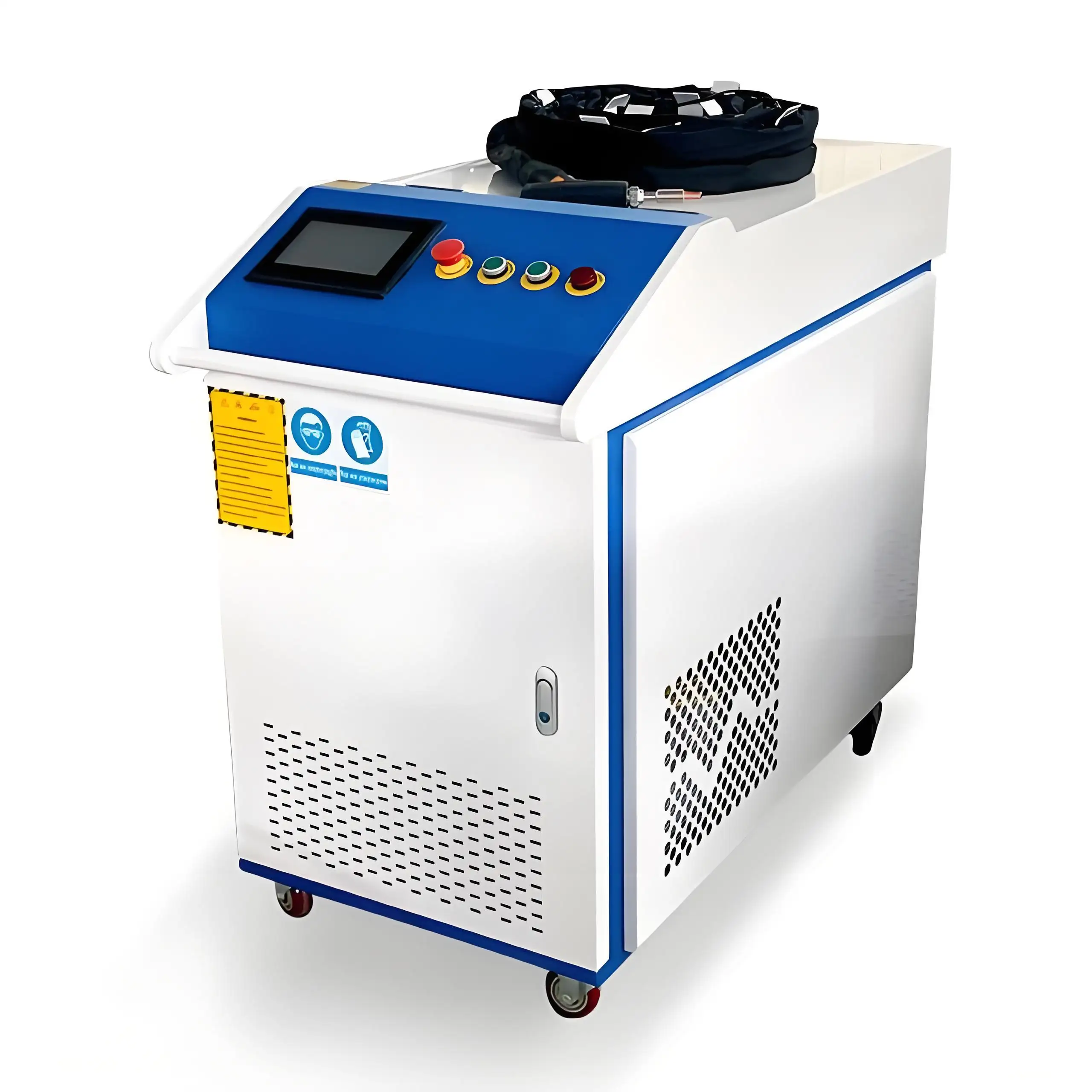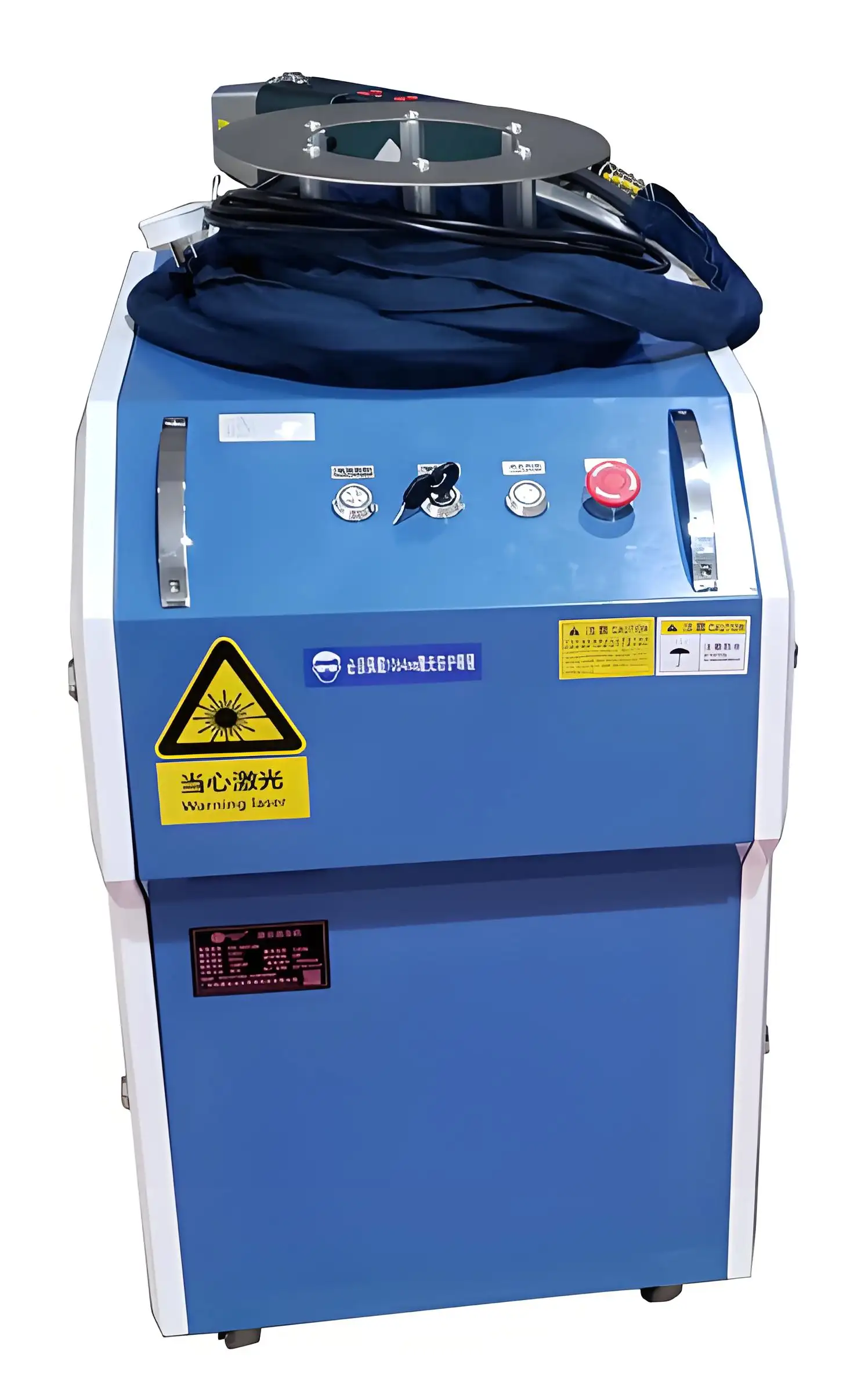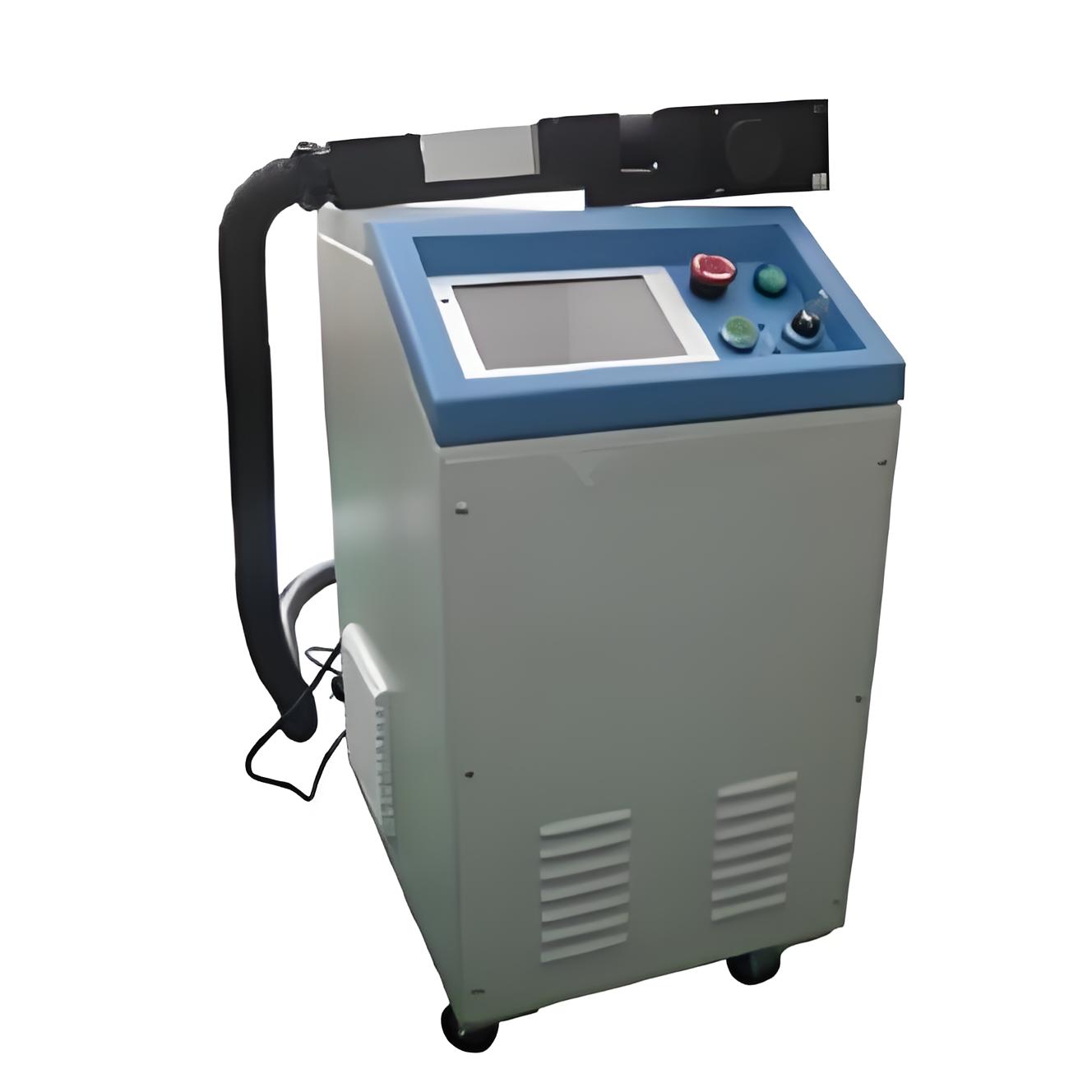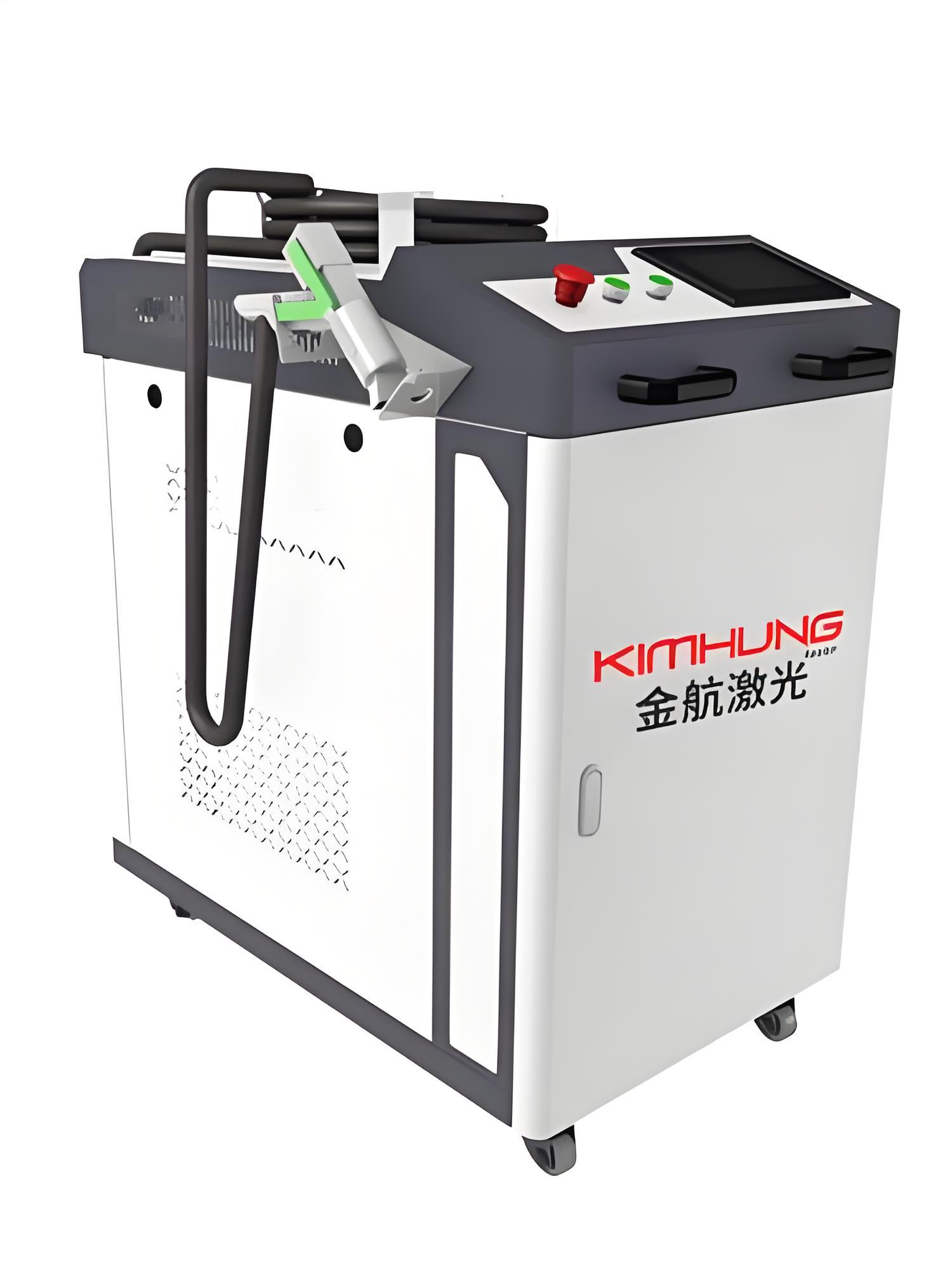In the world of industrial cleaning and surface preparation, laser rust removal machines have emerged as a revolutionary technology. These machines offer a highly efficient, precise, and environmentally friendly way to remove rust, paint, coatings, and other contaminants from various surfaces. However, when it comes to setting up and operating a laser rust removal machine, one of the most common questions that arises is: What power configuration does it require? As someone who has been deeply involved in the laser technology and industrial cleaning industry for many years, I’ve had the opportunity to work with numerous laser rust removal machines and understand the intricacies of their power requirements. In this article, I’ll share my insights and provide you with a comprehensive guide to the power configuration needed for a laser rust removal machine.

Understanding the Basics of Laser Rust Removal
Before we delve into the power configuration, let’s first understand the basics of how laser rust removal works. Laser rust removal machines use high-energy laser beams to heat and vaporize the rust or contaminant layer on a surface. The laser energy is absorbed by the rust, causing it to rapidly expand and break away from the underlying substrate. This process is highly selective, meaning that it targets only the rust or contaminant layer without damaging the base material, as long as the correct parameters are set.
The effectiveness of laser rust removal depends on several factors, including the wavelength of the laser, the power output, the pulse duration, and the spot size. Among these factors, the power output is one of the most critical as it directly affects the speed and efficiency of the rust removal process.
Factors Influencing Power Configuration
The power configuration required for a laser rust removal machine is not a one-size-fits-all solution. It depends on several factors, including:
1. Type and Thickness of Rust
The type and thickness of the rust or contaminant layer on the surface play a significant role in determining the power requirements. Thicker and more stubborn rust layers may require higher power outputs to achieve effective removal. Additionally, different types of rust, such as light surface rust or heavy, pitted rust, may also have varying power requirements.
2. Material of the Substrate
The material of the underlying substrate also affects the power configuration. Some materials, such as metals with high thermal conductivity, may require higher power outputs to ensure that the laser energy is concentrated on the rust layer and not dissipated into the substrate. On the other hand, more delicate materials may require lower power outputs to prevent damage.

3. Desired Cleaning Speed
The speed at which you want to remove the rust also influences the power configuration. Higher power outputs generally allow for faster cleaning speeds, but they may also increase the risk of overheating or damaging the substrate if not properly controlled.
4. Laser Technology and Type
Different types of laser technologies, such as fiber lasers, CO2 lasers, or Nd:YAG lasers, have varying power characteristics and capabilities. The choice of laser technology will also impact the power configuration required for the laser rust removal machine.
5. Safety and Regulatory Considerations
Safety and regulatory requirements also play a role in determining the power configuration. High-power laser systems may require additional safety measures, such as enclosures, interlocks, and personal protective equipment, to ensure the safety of operators and bystanders. Additionally, there may be local regulations or standards that govern the maximum power output of laser systems used in industrial settings.
Typical Power Ranges for Laser Rust Removal Machines
Based on my experience and industry knowledge, the power output of laser rust removal machines can vary widely depending on the factors mentioned above. However, here are some typical power ranges that you may encounter:
1. Low-Power Laser Rust Removal Machines (100 – 500 Watts)
Low-power laser rust removal machines are suitable for light surface rust removal, delicate materials, or applications where precision is more important than speed. These machines are often used in industries such as jewelry making, electronics, and automotive restoration. They offer a cost-effective solution for small-scale or specialized rust removal tasks.
2. Medium-Power Laser Rust Removal Machines (500 – 2000 Watts)
Medium-power laser rust removal machines are the most commonly used in industrial settings. They provide a good balance between power and speed, making them suitable for a wide range of rust removal applications, including heavy rust on metal surfaces, paint removal, and coating stripping. These machines are often used in industries such as manufacturing, construction, and marine.

3. High-Power Laser Rust Removal Machines (Above 2000 Watts)
High-power laser rust removal machines are designed for heavy-duty industrial applications where speed and efficiency are critical. They can quickly remove thick and stubborn rust layers from large surfaces, making them ideal for industries such as shipbuilding, oil and gas, and heavy machinery. However, high-power laser systems also come with higher costs, more complex safety requirements, and greater maintenance needs.
Table: Power Configuration Recommendations Based on Application
Here is a table that provides some general recommendations for power configuration based on different rust removal applications. Please note that these are just guidelines, and the actual power requirements may vary depending on the specific circumstances.
| Application | Recommended Power Range | Key Considerations |
|---|---|---|
| Light Surface Rust Removal (e.g., Jewelry, Electronics) | 100 – 500 Watts | – Precision is important – Delicate materials – Small-scale tasks |
| Medium Rust Removal (e.g., Automotive Parts, Small Metal Components) | 500 – 1000 Watts | – Balance between power and speed – Versatile for various materials – Moderate-scale tasks |
| Heavy Rust Removal (e.g., Industrial Equipment, Large Metal Structures) | 1000 – 2000 Watts | – High speed and efficiency required – Thick and stubborn rust layers – Large-scale tasks |
| Extreme Rust Removal (e.g., Ship Hulls, Oil Rigs) | Above 2000 Watts | – Maximum power for rapid removal – Heavy-duty industrial use – High safety and maintenance requirements |
Power Supply and Electrical Requirements
In addition to the laser power output, the power configuration of a laser rust removal machine also includes the power supply and electrical requirements. Here are some key aspects to consider:
1. Voltage and Frequency
Laser rust removal machines typically require a specific voltage and frequency to operate. Common voltage requirements include single-phase 110V/220V or three-phase 380V/440V, depending on the machine’s power output and the local electrical infrastructure. It’s important to ensure that the electrical supply in your facility matches the machine’s requirements to avoid damage or malfunction.
2. Power Consumption
The power consumption of a laser rust removal machine is directly related to its power output. Higher power machines will consume more electricity, which can impact your operating costs. It’s important to consider the power consumption when selecting a machine and to factor in the cost of electricity in your area.
3. Electrical Safety
Laser rust removal machines are high-power electrical devices, and it’s essential to ensure electrical safety. This includes proper grounding, the use of circuit breakers or fuses, and compliance with local electrical codes and regulations. Additionally, operators should be trained in electrical safety procedures to prevent accidents.

4. Backup Power Options
In some industrial settings, power outages or fluctuations can be a concern. To ensure uninterrupted operation of your laser rust removal machine, you may want to consider backup power options, such as uninterruptible power supplies (UPS) or generators. These can provide temporary power during outages and protect the machine from damage due to voltage spikes or drops.
Cooling System Requirements
Laser rust removal machines generate a significant amount of heat during operation, especially high-power systems. To prevent overheating and ensure the longevity of the laser and other components, a proper cooling system is essential. Here are some aspects to consider regarding cooling system requirements:
1. Cooling Method
There are two main cooling methods used in laser rust removal machines: air cooling and water cooling. Air cooling is simpler and more cost-effective but may not be sufficient for high-power machines. Water cooling, on the other hand, is more efficient and can handle higher heat loads, making it suitable for medium to high-power laser systems.
2. Coolant Circulation
For water-cooled laser systems, a coolant circulation system is required to continuously remove heat from the laser and other components. This typically involves a pump, a heat exchanger, and a reservoir for the coolant. The coolant should be of the appropriate type and quality to prevent corrosion and ensure efficient heat transfer.
3. Temperature Control
The cooling system should be equipped with temperature control mechanisms to maintain the laser and other components within their optimal operating temperature range. This may include thermostats, sensors, and control systems that adjust the cooling rate based on the temperature.
4. Maintenance and Monitoring
Regular maintenance of the cooling system is crucial to ensure its proper functioning. This includes checking the coolant level, cleaning the heat exchanger, and inspecting the pumps and hoses for leaks. Additionally, monitoring the temperature and coolant flow rate can help detect potential issues early on and prevent damage to the laser system.

Choosing the Right Power Configuration for Your Needs
Selecting the right power configuration for your laser rust removal machine requires careful consideration of several factors. Here are some steps to help you make an informed decision:
1. Assess Your Rust Removal Needs
Start by assessing the type and thickness of the rust or contaminant layers you typically encounter, the materials of the substrates you work with, and the desired cleaning speed. This will give you a better understanding of the power requirements for your specific applications.
2. Consider Your Budget
Power configuration is closely related to the cost of the laser rust removal machine. Higher power machines generally come with a higher price tag, as well as higher operating and maintenance costs. Consider your budget and the return on investment (ROI) you expect from the machine when making your decision.
3. Evaluate Safety and Regulatory Requirements
Ensure that the power configuration you choose complies with local safety and regulatory requirements. This includes electrical safety, laser safety, and any environmental regulations that may apply to your industry.
4. Consult with Experts
If you’re unsure about the power configuration that’s right for your needs, don’t hesitate to consult with experts in the field. Laser technology suppliers, industrial cleaning professionals, or industry associations can provide valuable insights and recommendations based on their experience and expertise.
5. Test and Evaluate
If possible, arrange for a demonstration or trial of the laser rust removal machine with different power configurations. This will allow you to see firsthand how the machine performs on your specific applications and help you make a more informed decision.
Conclusion
In conclusion, the power configuration required for a laser rust removal machine depends on several factors, including the type and thickness of rust, the material of the substrate, the desired cleaning speed, the laser technology used, and safety and regulatory considerations. By carefully assessing your needs, considering your budget, evaluating safety requirements, consulting with experts, and testing and evaluating different options, you can select the right power configuration for your laser rust removal machine. With the proper power setup, you can achieve efficient, precise, and cost-effective rust removal, enhancing the quality and productivity of your industrial cleaning operations.

Related Questions
1. Can I upgrade the power configuration of my existing laser rust removal machine?
In some cases, it may be possible to upgrade the power configuration of an existing laser rust removal machine. However, this depends on the machine’s design, the availability of compatible power components, and the expertise of the technician performing the upgrade. It’s important to consult with the manufacturer or a qualified laser technician to determine if an upgrade is feasible and to ensure that it’s done safely and effectively.
2. How does the power configuration affect the lifespan of a laser rust removal machine?
The power configuration can have a significant impact on the lifespan of a laser rust removal machine. Higher power outputs generally generate more heat, which can put additional stress on the laser and other components. Proper cooling and maintenance are essential to prevent overheating and extend the lifespan of the machine. Additionally, using the machine within its recommended power range and avoiding excessive strain can help ensure its longevity.
3. Are there any energy-efficient power configurations for laser rust removal machines?
Yes, there are energy-efficient power configurations available for laser rust removal machines. Some manufacturers offer machines with advanced power management systems that optimize energy consumption based on the cleaning task. Additionally, choosing the appropriate power output for your specific applications can help reduce energy waste. It’s also worth considering machines with high-efficiency cooling systems, as they can contribute to overall energy savings.
4. What safety precautions should I take when operating a high-power laser rust removal machine?
Operating a high-power laser rust removal machine requires strict adherence to safety precautions. This includes wearing appropriate personal protective equipment (PPE), such as laser safety goggles, gloves, and protective clothing. The machine should be operated in a designated area with proper laser safety enclosures and interlocks to prevent accidental exposure to the laser beam. Operators should also receive comprehensive training on laser safety procedures and be familiar with the machine’s emergency stop mechanisms.
5. How can I ensure the stability of the power supply for my laser rust removal machine?
To ensure the stability of the power supply for your laser rust removal machine, you can take several measures. This includes using a dedicated electrical circuit for the machine to avoid voltage fluctuations caused by other equipment. Installing a voltage stabilizer or surge protector can also help protect the machine from power surges and spikes. Additionally, regular maintenance of the electrical infrastructure in your facility, such as checking wiring and connections, can contribute to a stable power supply.






